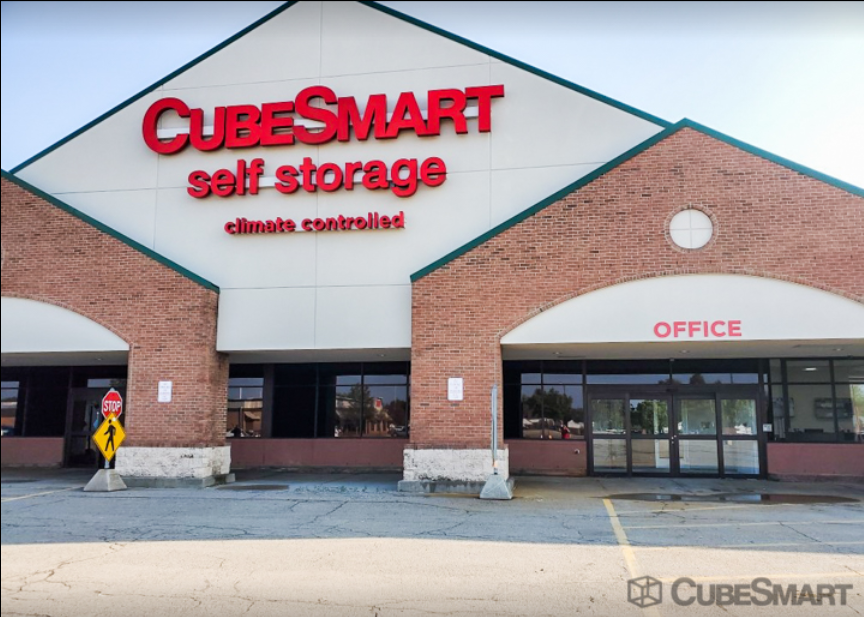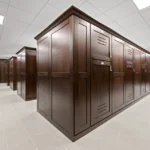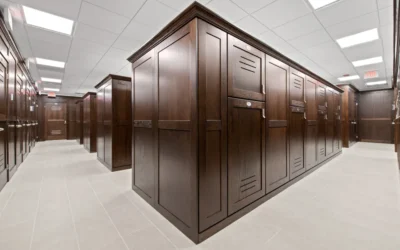Self-storage conversions — taking an existing building and turning it into a self-storage facility — continue to draw significant interest this year.
“About 12 million of the over 64 million that opened last year were conversions,” says Steven Weinstock, who oversees the self-storage division at Marcus & Millichap. “This year, we are expecting about 60 million to be delivered; 8 million of it is forecast to be conversions.”
Although that’s down from over 18 percent last year, conversions under M&M’s 2020 forecast would still represent over 13 percent of the development pipeline.
Fund targets conversions

Fairway America is targeting more conversions in 2020, similar to this former grocery store in Detroit that it turned into storage units.
Fairway America, a player in the space, is nearing $25 million in commitments toward a $100 million value-add self-storage fund launched in 2019 specifically to do conversions. The company is in discussions with a number of investor groups, says Matt Burk, CEO and chief investment officer.
“We have three (deals) closed and in the fund now and about five we are working on (in due diligence) with several more in the very early stages of identification. We’d like to have eight to 10 closed by year-end on our way to an eventual total of 20-25 facilities,” Burk says.
Of the three deals in the fund, a converted grocery store in the Detroit metro area (Southgate) is actively leasing. Fairway America bought the property after Kroger vacated it for larger digs. The property includes a Dunham’s Sports store and a Logan’s Roadhouse restaurant. Fairway America bought the active retail although the retail portion and pad sites could eventually be split off in a separate sale, Burk says.
Midwest offers price advantages
Fairway America looks for markets with job and population growth yet so far it has gravitated to Midwest markets such as St. Louis, Detroit and Ohio where it found well-located properties at the right price and municipalities open to redevelopment.
“It comes down to the ratio of rent that you are capable of getting and the price you have to pay for it,” he says. “Prices have gone up a little bit on acquisition side but more boxes coming online will help keep that down.”
A significant amount of vacant retail can be studied for potential conversion. Those properties include former Macy’s, Sears, JCPenney’s, Toys R Us, Kmart’s and grocery stores. Light industrial buildings are also on investors’ radars.
The potential could even be broader. In Plymouth, Massachusetts, a real estate developer wants to convert a former indoor sports complex into self storage, and the city’s planning board unanimously supports the proposal.
Hungry for big boxes
Conversions provide economy of scale: an existing building with a large floor plate, plenty of parking and often a neighborhood close to where people live. However, challenges exist in designing an efficient space, Weinstock says.
“Big massive stores, with big floor prints may mean you’ll have to walk a long way to reach your unit. Newly designed (non-conversion) facilities have exits and entrances that minimize walking,” he says.
Fairway America’s sweet spot is a 50,000- to 100,000-square-foot big box with good neighbors that drive traffic such as a home improvement store. The site must also meet scorecard metrics on population, income, visibility, traffic counts and entitlements.
Self storage a ‘logical reuse’ for vacant stores and warehouses
As big boxes are being repurposed, self storage is a logical alternative to explore along with alternative office uses, low-impact destinations such as fitness centers, or other types of retail, says Curt McCall, who leads the self-storage specialty practice at CBRE.
“For neighborhood retail centers and the big boxes, it really gets back to highest best use. If those properties still have a retail element to them, then owners tend to shy away from self-storage because they’d rather have bodies on the property so you’ll see more fitness, alternative office or other uses. But, in cases where retail has completely moved out, then self-storage is a very logical reuse,” he says.
Light industrial properties may be situated in less desirable areas but, depending on their age, they may have housing that has grown up around them.
“Self-storage is a very logical reuse (for light industrial), but again, you need the population in the immediate area that can support a self-storage facility,” McCall says.
Getting a city to agree to a self-storage redevelopment project is often easier than getting a new construction project permitted and green-lighted, he says. “For these industrial developments, typically governments look favorably on that type of reuse to get these buildings back into commerce.”
Fairway America’s Burk says potential investors like the conversion thesis and talks are actively underway with several potential investors in its value-add fund.
“The self-storage business is not as widely understood as some other more traditional asset classes, and there have been headwinds in self-storage,” he says. “A lot of supply has come online, rents have been under pressure. Certainly, those are the downsides at the moment, but I think the acquisition prices and the all-in basis on these assets at good infill locations outweigh that,” he says. “We’ve looked at the opportunity every which way we can and we still like it a lot.”







